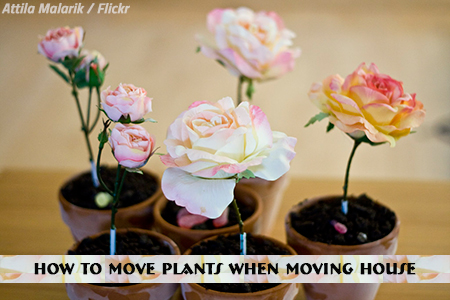 For better or worse, your upcoming move will introduce a large number of changes in your life – some of them you will surely enjoy, others you won’t particularly like. Once the residential move becomes a fact, you should have sufficient time to figure out the best way to adapt to the new environment, but for now, the time has come for you to handle the important decisions before the arrival of Moving day.
For better or worse, your upcoming move will introduce a large number of changes in your life – some of them you will surely enjoy, others you won’t particularly like. Once the residential move becomes a fact, you should have sufficient time to figure out the best way to adapt to the new environment, but for now, the time has come for you to handle the important decisions before the arrival of Moving day.
One such important decision is what to do with your plants when you move. If you live in a house with a garden, then, in addition to the house plants inside your home, you probably have a number of garden plants or even small shrubs that you would love to take with you. If you live in an apartment, then it’s your lovely potted plants that you will most likely get worried about.
The following tips for moving plants will give you valuable information about whether or not to bother moving your plants, how to prepare plants for moving, how to pack plants for moving, and of course – how to move plants to your new home if you’ve already made up your mind to go through all that trouble.
Should you move your plants when moving out?
Do moving companies move plants? One thing you should remember is that plants fall into the category of household items that are forbidden for transport. In other words, no professional moving company will agree to transport your plants, not even local movers on a short distance move (under normal circumstances). But why?
Unlike many items of hazardous nature (see the full list of non-allowable items), plants, shrubs, and saplings are not dangerous in any way and cannot pose any threat to the persons involved in the move or to the household items inside the moving van. Professional movers are not allowed to move plants because the latter are too fragile and almost never survive the moving journey regardless of its duration.
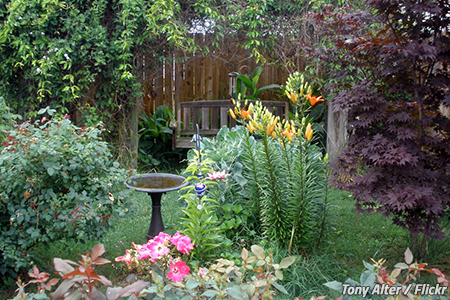
How do you leave so much beauty behind? The good news is that some of your plants will survive a short distance move.
Thus said, you can still attempt to move some of your plants on your own by preparing, packing and moving them in your own vehicle – a choice you should consider only when you’re moving locally (across town or to a neighboring town or city). But will your time, efforts, and money be worth it?
To help you make the best call under the presented circumstances, simply ask yourself this:
- How much do your plants mean to you? You may have invested good money into your house plants, but the sentimental attachment you have towards some special ones will also affect your decision whether you should go ahead and risk moving plants to the new home, or whether you should leave them behind for somebody else to enjoy.
- What’s the climate of your destination? The climatic conditions of your new town or city may be vastly different than the ones your leafy friends are enjoying at the moment. Will the climate of the new region be favorable to your potted plants or garden plants?
- What season are you moving in? The precise timing of your move may influence your final decision about what to do with your plants when moving. When is the best time to move plants and shrubs? The periods of late fall and early spring will give your house plants the best chance of survival because that is when most plants will adapt best to the new setting thanks to their current state of dormancy.
10 things people forget to do when moving house
What to do with plants when you move
Moving plants to a new home often comes down to a thorough risk assessment on your part – after all, you don’t want to just risk the lives of your lovely plants for no good reason. It’s a selfish thing to do… unless you’ve relocated house plants before and you know exactly what needs to be done so that they can survive the moving trip.
If the initial risk assessment proves to be unfavorable for you and your desire to move your plants to a new home, then you still have several good options to keep your leafy companions out of harm’s way.
-
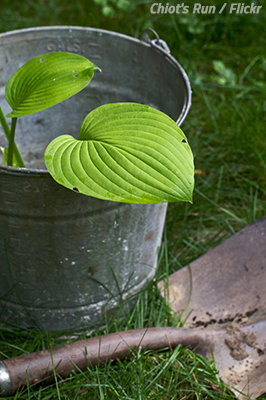
You know what needs to be done, don’t you?
Leave plants where they are. Your plants may survive a local move but are not likely to make it during a cross-country move that takes days to complete. So, if you are moving long distance to another part of the country, then the most logical choice will be to leave your plants behind in the one place where they feel fine. If possible, speak with the new home owners or renters to make sure they will take good care of them.
- Gift plants to friends or neighbors. Leaving your plants in the hands of strangers is also a risk, so a much better solution will be to give some or all potted plants or garden plants to friends or neighbors who you know to be trustworthy. Besides, what’s a better farewell present than gifting a bunch of beautiful house plants a person who’s meant so much to you?
- Donate plants to local organizations. As you already know, moving house plants across country is seldom worth the risk. Instead, consider donating your plants to local schools, nursing homes, or hospitals where they will be hopefully enjoyed for years to come.
How to get rid of things when moving home
How to prepare plants for moving
Plants are notorious for their unrivaled fragility and low rate of survival when moved from one home to another. They go through a state of shock when their surroundings change abruptly and it’s your task to try to minimize that relocation shock by creating a fairly safe microenvironment during transit.
- Sunlight. Keep in mind that some plants are more sensitive to sunlight than others and will not take well any sudden changes from light to darkness, and vice versa. Expose your indoor plants to less and less direct sunlight as Moving day approaches to prepare them for the upcoming trip in your own vehicle. This is a requirement if you intend to transport the plants in the trunk of your car (not recommended).
- Temperature. Extreme temperature fluctuations can be really bad for house plants. If you’re moving in the summer as most people are, then do your best to haul your favorite plants in the passenger area where the temperature will be moderate. In the wintertime, you must insulate the leafy organisms from the cold, either by using sheets of bubble wrap or covering them with blankets to keep them from freezing over. Read on for more details.
- Water. During a summer move, you should water your household plants – the ones you have decided to take with you – on the morning of Moving day and wait for the water to drain away before you place them in the car. If you plan a very early start, then water them on the evening prior to Moving day. During a winter move, you should last water them 2-3 days prior the move-out day with the purpose of keeping their soil fairly dry during transport.
- Parasites. Should you notice some sort of infestation on any of the plants you intend to move, then your priority task is to consult a florist about possible treating agent. In case of insufficient time to deal with the issue or persistence of the infestation, you’ll have no alternative but to leave behind the poor plants.
Moving to another state: Complete guide with tips
How to pack plants for moving
In order to give your flowers, potted plants, and garden plants a fighting chance to make it to the new home, you’ll have to pack them properly for maximum safety and minimum shock. It’s time for some practical tips for packing plants when moving to a new home.
-
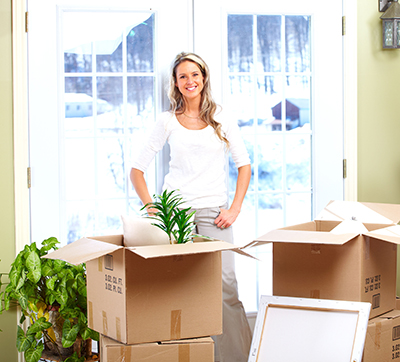
In the majority of cases, packing plants for a move is fairly straightforward.
Step 1. Get strong cardboard boxes which you can use for transporting small potted plants. Use tape to reinforce their bottoms on the outside and place packing paper on the inside for added protection.
- Step 2. Poke several holes on the lid and the sides of each packing box so that your plants get sufficient air while in transit.
- Step 3. If you insist on moving some garden plants, shrubs, or even a sapling, then you’ll have to dig it up together with its root system. Water the plant and then dig up a circle around it so that you can remove the entire root ball intact. The best way to do this is to use a shovel and dig a ring around the plant, and then pull it out carefully by preserving both the thick and the thinner roots. Place the entire root ball into a plastic bag (do not remove the soil) and make sure the root system has enough moist to last the journey. Add water, if necessary. Wrap in an extra layer of bubble wrap if you’re moving house plants in cold weather.
- Step 4. Wrap clay pots in damp packing paper, then place one sheet of dry packing paper over the moist layer. Wrap plastic pots in dry packing paper only.
- Step 5. Create a protective sleeve from hard paper that matches the total height of each potted plant. Position that protective paper over the plant and tape it to the pot. Consider placing support stakes for your taller plants and tying up their foliage with pieces of twine to minimize any type of shifting.
- Step 6. Transfer the protected plants into packing boxes of appropriate sizes – there should be enough room between the tallest plant in the box and the lid of the moving container.
- Step 7. Arrange the pots close to one another and place crushed paper between to eliminate any harmful contact during the move.
- Step 8. Close up the boxes. The ventilation openings you made earlier along the containers should provide enough air for your plants. Nevertheless, refrain from taping the lids firmly.
- Step 9. Take a black marker pen and write PLANTS, FRAGILE, and THIS SIDE UP on two sides of each box.
- Step 10. Load your plants last into your car, just before you start the car trip.
The best packing tips for moving
How to move plants to your new home
As mentioned above, moving companies will not move flowers, potted plants or garden plants because they are forbidden for transport (due to their unrivaled fragility). We’ve already described in detail how to pack the species of flora you own, now it’s time to give you some advice on how to move plants when moving house.
The best way to move plants for a short relocation trip is to transport them in your own vehicle, preferably not inside the dark and hot/cold trunk. The best way to move plants across the country is to not move them at all due to the minimal chance of survival. Still, if you just must take some of the leafy beauties with you, the above tips for packing plants should keep them alive for 24-48 hours depending on the type of plants and transportation conditions.
Packing timeline for moving: 100% Complete
What to do with plants after the move
What you do with your plants right after you arrive at your destination will increase or decrease their chance of survival. Keep in mind that the post-move adaptation period is critical for the majority of flowers, potted plants, and garden plants.
-
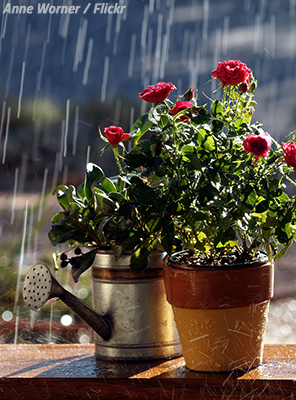
Follow our advice on how to move plants to a new home and your leafy companions will be smiling again soon after the move.
Take your plans inside the new home ASAP.
- Leave them in their moving containers for a few hours to lessen the shock they are likely to go through again.
- Unpack your plants and water them carefully.
- Place your beautiful species of flora in strategic places that are similar to the ones in the old place. Do NOT place any of them in direct sunlight yet.
- Re-plant cuttings, shrubs or saplings in the garden of your new house.
- Give your plants a few weeks to recover from the relocation shock. Some of them may lose their leaves – do not worry as it is often only a temporarily defensive reaction that should pass fairly quickly.
- Consult a specialist if some of your plants do not improve their condition in a couple of weeks.

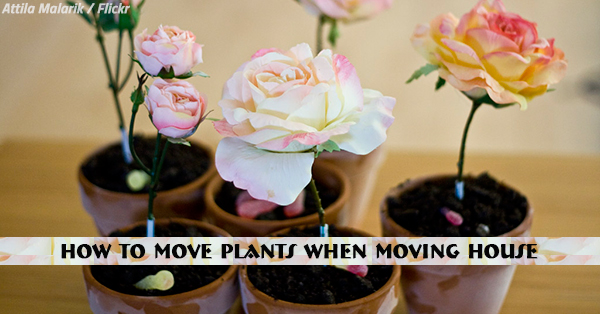








Awesome post about moving plants. It is something that would easily be overlooked to write about in the context of moving. Nice post.
My mother is an avid gardener and I couldn’t imagine her moving to a new home without her plants… Nice to think she’d never have to leave so much hard-work in a former garden! If you’re like her, you should be familiar with re-potting your plants. These packing tips are excellent! Use these, and keep in mind, you want to treat the move like a long re-potting process! It’s stressful for the plants, so be as gentle and caring as possible 🙂